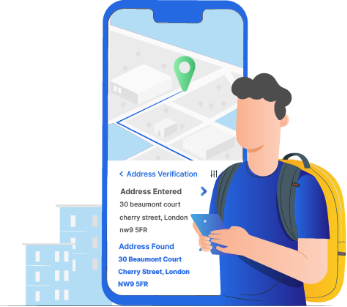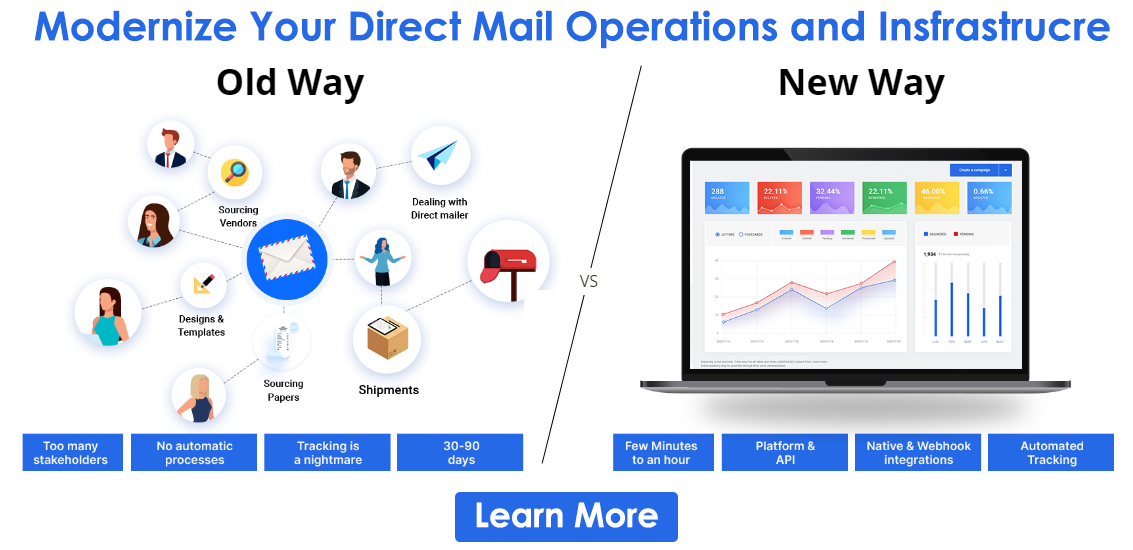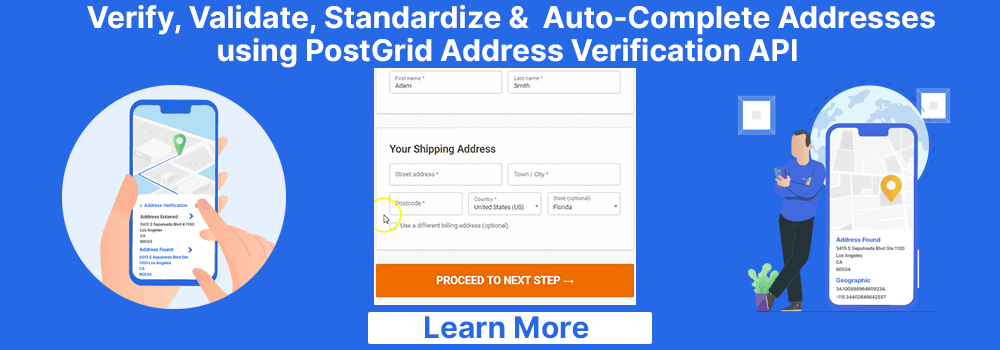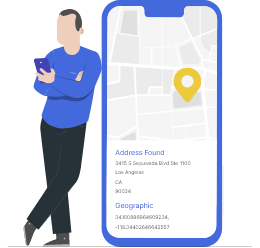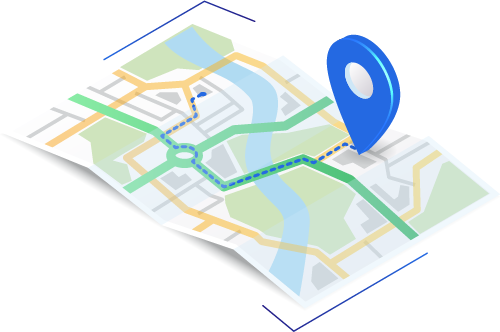
Why Address Parsing is an Important Process in Address Verification?
Verifying an address isn’t as straightforward as it seems. Apart from correction problems, new addresses are added every week to the database of deliverable addresses of a country. Moreover, many addresses get transformed from residential to commercial or vice versa.
The address Parsing process involves segregating a street address into single or multiple components. In the term parse address, the word ‘parse’ means dividing something into smaller parts. People often refer address parsing as extracting an address from a text string.

What is an Address Parser?
A successful address parser divides real-world addresses into smaller parts or addresses elements out of text blocks. Today, most of the addresses typed online have effects in the form of spelling errors, incorrect house numbers and postcodes, and formatting errors.
Ultimately, this can trouble shipment speeds or undeliverable shipments. It could be a concern for companies covering business operations domestically and internationally. Let us parse this address to help you understand address parsing.
Mr. Willam Baker,15-123 1/2 SWIFT ST SE, MONTREAL QC H3Z 2Y7
| Title | Mr. |
| Name | Willam Baker |
| Unit | 15-123 |
| Street Name | 1/2 SWIFT ST SE |
| City | MONTREAL |
| Province | QC |
| Postal Code | H3Z 2Y7 |
Understanding the Address Verification Process
To get a better idea of what is address parsing, you must understand the address verification process;
The Address Gets Parsed: The address parser is responsible for logically separating the household number, address, mis-spellings, abbreviations, etc.
The Address Gets Standardized: After parsing the address, it gets formatted and standardized according to the country. For example, 10-123 1/2 Main Street MW Montreal, QC, H3Z 2Y7 Canada (this is the official address format in Canada).
The Address Gets Validated: A national database search is conducted after standardization to determine whether the address exists. In Canada, we use SERP (Software Evaluation and Recognition Program) to improve address accuracy and complement with Canadian National Change-of-Address Processing capabilities.
The Address Gets Verified: Not every address will be deliverable, despite existing on a database.
 Also Read: Fuzzy Address Searching
Also Read: Fuzzy Address SearchingHow Parsing is a Part of the Address Verification Process?
Address parsing is a step in the address verification process that gives you a better understanding of what it is. It works like a beneficial outcome. During the address parsing process,
- The information of an address is entered.
- Parsing takes place and helps the user to break down the address into individually identified components.
- Then, spellings, abbreviations, and casing are fixed automatically from the parsed address.
- Lastly, the user gets a standardized address and parsed address data.
Understanding Data Normalization
Data Normalization involves transforming data into a widely accepted format. Usually, a government body, authority, or committee determines this format. The conversion of the address data into an accepted format is known as Address Normalization. For example, in Canada, Canada Post sets the address format.
Several variables might differ from one another when a user enters some address data into a system designed to parse addresses.
For example, Canadian businesses might look for an API to parse Canadian addresses in order to precisely find the addresses from millions of addresses in Canada and billions worldwide.
It is possible to write a valid address in multiple ways. However, this could lead to countless errors in spelling, abbreviations, aliases, etc. It highlights the importance of address normalization and standardization in fixing incorrect addresses and merging duplicate ones. In this way, we can determine what is a parsed address by a single authoritative address resulting from this address normalization.
Why Do We Need Address Parsers?
Every address needs to be written on paper or typed on a computer. However, different people will enter addresses in different ways. Even different software programs will have different formats of handling addresses. Moreover, different countries have developed their postal standards. To parse addresses of various formats more accurately, you require a unified solution.
These are some examples of different postal address formats from different countries;
Canada: Ms. Hellen Baker, 1010 Clear Street, Ottawa, K1A 0B1, Canada
USA: John Henry, 300, Boylston Ave E, Seattle, WA 98102, USA
UK: Mr. James Norman, 1 Cornhill, London, EC3V 3ND, UK
Australia: Ms. Lucy Walker, 98 Shirley Street, PIMPAMA QLD 4209
These are some prominent reasons why we need address parsing:
- It helps us to match addresses across different databases and datasets.
- We can develop new, unique identifiers for addresses.
- Address parsing allows us to have a more accurate location analysis.
- It helps us to convert unstructured data into usable information.
- Address management becomes a lot easier with address parsing APIs.
- It assists in addressing standardization and normalization.
- We can use it for the de-duplication of redundant addresses
Also Read: International Address Verification Services
Most Widely Used Parsing Methods
Organizations around the world use different methods to parse addresses. These methods are ideal depending on the situation and requirements.
1. Using Regular Expressions:
In most situations, regular expressions may not be the best solution, but they can still help. You won’t need any other mechanisms for address parsing if your addresses are already standardized and checked. Using Regexp can be helpful to divide meta-symbols and symbols into components. This method of address parsing might be suitable for some situations, but it is a very robust way to parse addresses.
Advantages
- An effective method for parsing structured text strings.
- Highly configurable and powerful
- No external library/API/service is required
Disadvantages
- Complicated with design, design, and support.
- This might lead to performance problems.
- Might not work if addresses are not standardized.
2. Using NPM packages
There are so many NPM packages in the market that can help you with parsing and standardizing addresses. Moreover, these address parser packages are specified countries and data formats. These are some of the best examples of NPM libraries,
- Parse-address-string: This address parser focuses on addresses in the US and Canada.
- Address-parse: It parses and analyzes the addresses in China.
- Br-address-parser: This address parser looks for Brazilian addresses.
- uk-clear-addressing – npm: You can parse addresses in the UK with house number, city, state, and zip code.
There could be multiple address parsers in the form of NPM packages. However, finding the right one could be a challenging process. Moreover, you need to be extra careful with the dependencies and licenses when you choose one.
Advantages
- Easy and convenient to use
- It is open source and driven by the community
- No external API or service is required
Disadvantages
- It is limited to specific countries and address formats.
- Must check the dependencies and licenses if planning to use them in a commercial project.
3. Using NLP Programs for Parsing
You can rely on NLP programs to parse addresses from unstructured text with the help of machine learning and natural language processing (NLP). Above all, innovative address recognition programs smartly extract valid data from unstructured text. In today’s world, machine learning models are constantly improving. As a result, learning from tons of address data around the globe. Regrettably, NLP programs are notably demanding on system resources, consuming significant amounts of RAM. To optimize the performance of these applications on local machines, it’s advisable to clear RAM on your Mac prior to executing NLP tasks.
Advantages
- It is a smart and effective engine
- It parses strings for locations
- Uses a permissive license and open-source
Disadvantages
- The library must be supported and installed.
- It Consumes tons of RAM to run the trained data model.
 Also Read: Lietuvos Paštas Address Validation
Also Read: Lietuvos Paštas Address Validation4. Address Verification API: PostGrid
PostGrid uses a CASS and SERP-certified address validation API. Businesses rely on this API to verify Canadian and American addresses. Our robust solution helps you parse, validate, standardize, autocomplete, and clean addresses in more than 245 countries and territories.
The PostGrid address verification API automatically verifies postal information and standardizes addresses to meet the standards of Canada Post. Our API ensures that the parsed addresses are accurate, cleansed, and standardized according to local postal standards.
Our address verification software helps businesses to verify, validate, and standardize addresses in real-time. The platform can also use the bulk verification option to verify up to 200,000 addresses at once. Canadian businesses looking for the best API to parse Canadian addresses can rely on PostGrid to properly fetch data and match it with the country’s postal address verification web service. You can also signup with PostGrid to get a demo of our address verification API.
These are the standards used by PostGrid for their address verification service:
- SERP Certification (Canada): Canada Post issues this postal certification under its Software Evaluation and Recognition Program to ensure improved address accuracy. Canadian businesses with SERP certification can test whether or not the mailing addresses are valid or not.
- CASS Certification (US): TUSPS developed this certification program to improve postal coding and address verification software. It helps in improving the quality of address processing. This certification has become a benchmark for developers, software providers, service providers, commercial mailers, and more.
To integrate the PostGrid address verification API, you must follow the following steps:
- Create an account: First, try to create a PostGrid account by entering the necessary details. The set-up won’t take more than a few minutes and is self-explanatory.
- Login with your Account: Use your unique user ID and password to go to the dashboard. It will help you with everything you need to know to start using the API.
- Use the API Keys: Go to the settings menu to use the test and live API keys. Just copy the keys from there, and they will be ready to use. However, we recommend using servers to avoid security issues.
- Paste the Keys: Now, you have to paste the URL of our API to your website’s address bar, where you need the addresses to get verified.
- Start API calls: After pasting the URL, you will get successful API calls on request. It is also possible to customize it according to your demands.
5. Using Geocoding API
This is perhaps the most advanced and complex method to parse addresses. A Geolocation API works far better than any other tool to provide the facility of parsing, verification, standardization, and validation under a single roof. This method provides better clarity on data and accuracy while checking addresses in the real world. The address structure corrects as well as critical location information and latitude/longitude coordinates.
PostGrid’s Geocoding API is a trustworthy solution to fetch proper geocoding of addresses. It also comprises reverse geocoding capabilities, which can help businesses to mark precise locations on the map. The requirements of Geocoding might differ from business to business. These are some of the best use cases where you can use Geocoding as an address parser.
- Marketing or Commercial Uses
- Targeted Messaging
- Location-Based Personalization
- Distance-Based Marketing
- Business Intelligence
- Finance
- Health
- Public Safety
- Military
eCommerce businesses can heavily use geocoding to identify geographic patterns, manage customer data, and analyze address data for eCommerce address validation and verification. It accommodates meaningful functions that can help businesses to serve and perform better.
Also Read: International Address Verification API
Conclusion
Companies often require tools for address verification or validation for various reasons, like, marketing, operations, sending invoices, retaining customers, personalization, etc. Address parsing is a critical component of the address validation or verification process.
PostGrid can help you reduce redundancy in your address database and provide more accurate datasets. Furthermore, our solutions let you create unique data analysis filters and more.
Signup now to access the API to parse Canadian addresses

